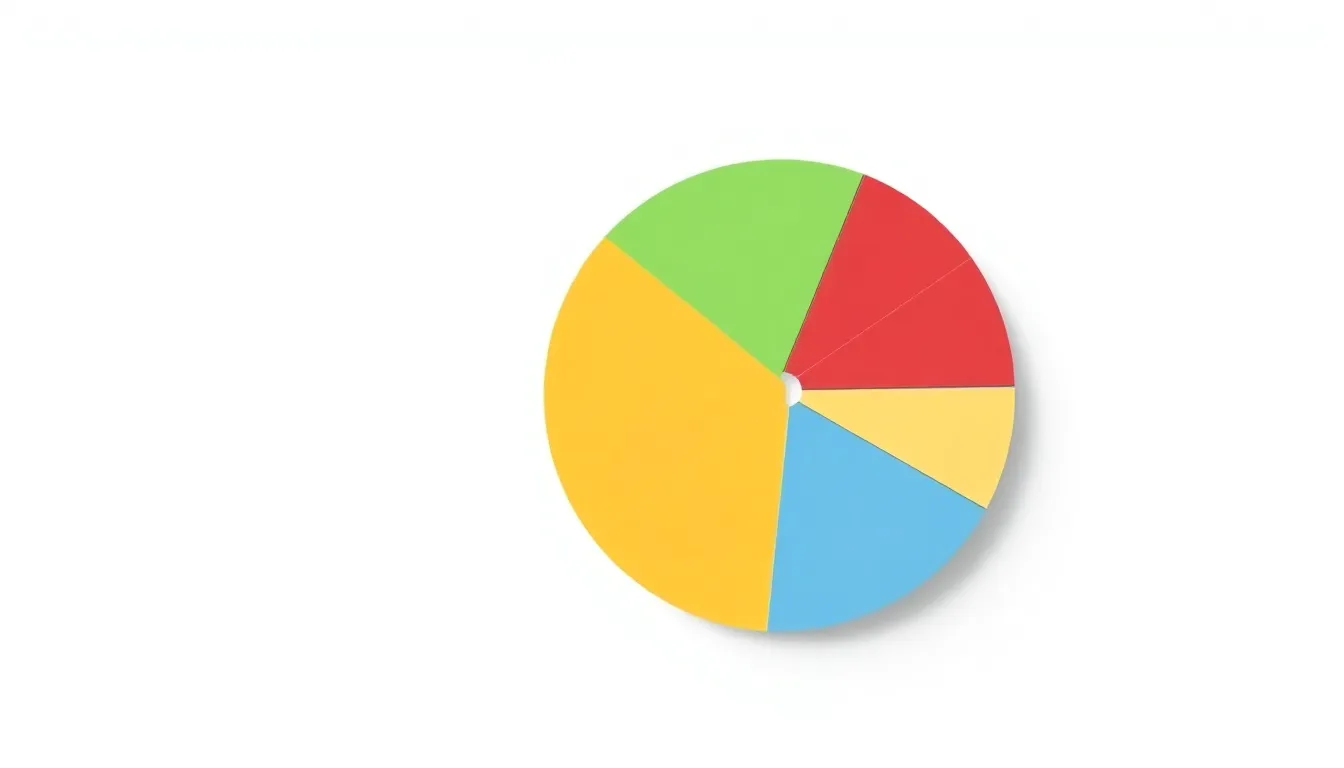Table of Contents
ToggleWhen it comes to fractions, 1/6 might not be the life of the party, but it certainly knows how to hold its own. Picture this: you’ve got a delicious pizza, and you’re trying to share it with friends. If you slice it into six equal pieces, each slice represents 1/6 of that cheesy goodness. Now, who wouldn’t want to know more about that?
Understanding 1/6 isn’t just about pizza; it’s a gateway to mastering fractions in everyday life. Whether you’re calculating discounts, measuring ingredients, or dividing up chores, this little fraction packs a punch. Join in as we unravel the mysteries of 1/6 and discover why it deserves a spot in your mathematical toolbox. Who knew fractions could be so much fun?
Understanding Fractions
Fractions represent a part of a whole. Each fraction consists of a numerator and a denominator. The numerator indicates how many parts are taken, while the denominator defines the total number of equal parts that form the whole. For example, in the fraction 1/6, one part is considered out of six equal parts.
Understanding the significance of fractions leads to better comprehension of daily tasks. Cooking or baking often requires measuring ingredients, where fractions come into play. If a recipe calls for 1/6 cup of sugar, knowing how to visualize and measure this fraction becomes essential.
Dividing items or sharing equally illustrates another practical application. When sharing a pizza among six people, each person receives 1/6 of the pizza. Such situations demonstrate how fractions facilitate equitable distribution.
Discounts during shopping also hinge on understanding fractions. For example, a 1/6 discount on a $60 item saves $10. This scenario shows how fractions directly influence financial decisions.
Learning fractions extends beyond basic calculations. They form the foundation for more complex mathematical concepts. Mastering fractions like 1/6 equips individuals with skills for further studies in mathematics and real-life applications.
What Is 1/6?

1/6 represents a fraction indicating one part out of six equal parts. Understanding this fraction reveals its role in various everyday scenarios.
Definition of 1/6
1/6 consists of a numerator, which is 1, and a denominator, which is 6. This fraction signifies that one whole is divided into six equal sections. Each section or part corresponds to 16.67% of the whole. For example, in a scenario where a pizza is cut into six equal slices, taking one slice represents 1/6 of that pizza. This fraction serves as a foundational concept in mathematics and can impact tasks like budgeting, cooking, and sharing.
Visual Representation of 1/6
Visualizing 1/6 can enhance comprehension. A common technique uses circles or pies divided into six equal segments. Highlighting one segment illustrates 1/6 effectively. Moreover, bar models can represent this fraction, showcasing a bar divided into six equal lengths, where one length reflects 1/6. Diagrams and objects like pie charts assist in grasping fractional values. Understanding these visual tools solidifies the concept, making it applicable in real-world scenarios, such as measuring ingredients or calculating discounts.
Practical Applications of 1/6
Understanding 1/6 serves multiple practical applications across various domains. From cooking to mathematics, this fraction plays a crucial role.
In Cooking and Recipes
When cooking, precise measurements matter. Recipes often require fractions, and 1/6 cup can appear frequently for ingredients. For instance, a cake recipe might call for 1/6 cup of sugar, contributing to the overall flavor. He cooks could easily convert this measurement to 2 tablespoons for convenience. Accurately measuring ingredients ensures dishes turn out as intended. Additionally, cooks scaling a recipe for more servings might multiply each ingredient by 1/6 to keep flavors balanced. Thus, familiarity with 1/6 equips cooks to achieve successful results in the kitchen.
In Mathematics and Ratios
Fractions serve as foundational elements in mathematics. The fraction 1/6 represents a ratio of one part out of six equal parts. Financial calculations often employ this ratio; for instance, a budget analysis might allocate 1/6 of total expenses to entertainment. Students use 1/6 to comprehend proportions and simplify problems across various math scenarios. In geometry, 1/6 can represent angles, shapes, or areas within a whole. Understanding how to work with this fraction builds confidence for tackling more advanced mathematical concepts, making it essential for students in school.
Related Concepts
Understanding 1/6 opens the door to various related concepts in mathematics and everyday life. Exploring these connections illuminates how fractions interact in real-world scenarios.
Other Common Fractions
Common fractions include 1/4, 1/2, and 3/4. Each fraction represents a specific portion of a whole, similar to 1/6. Fractions like 1/4, representing one out of four equal parts, simplifies to 25%. When in a recipe, one might need 1/2 cup of flour or 3/4 cup of milk. Recognizing these fractions enhances understanding of measurements across various activities.
Comparing 1/6 with Other Fractions
Comparing 1/6 with fractions like 1/3 or 1/2 reveals how sizes differ. For instance, 1/3 equals approximately 33.33%, while 1/2 equals 50%. In terms of divisions, 1/6 is smaller than both, emphasizing the importance of recognizing fractional sizes. Understanding how these fractions relate aids in tasks like budgeting and cooking, where accurate portions matter significantly.
Understanding 1/6 is essential for navigating everyday tasks and enhancing mathematical skills. This fraction plays a significant role in various practical applications from cooking to budgeting. By grasping the concept of 1/6 and its visual representations, individuals can approach fractions with confidence.
Mastering 1/6 not only simplifies calculations but also sets the stage for exploring more complex fractions. Whether it’s measuring ingredients or making financial decisions, recognizing the value of 1/6 helps in achieving accuracy and efficiency. Embracing fractions can transform mundane tasks into enjoyable learning experiences, paving the way for a deeper appreciation of mathematics in daily life.



